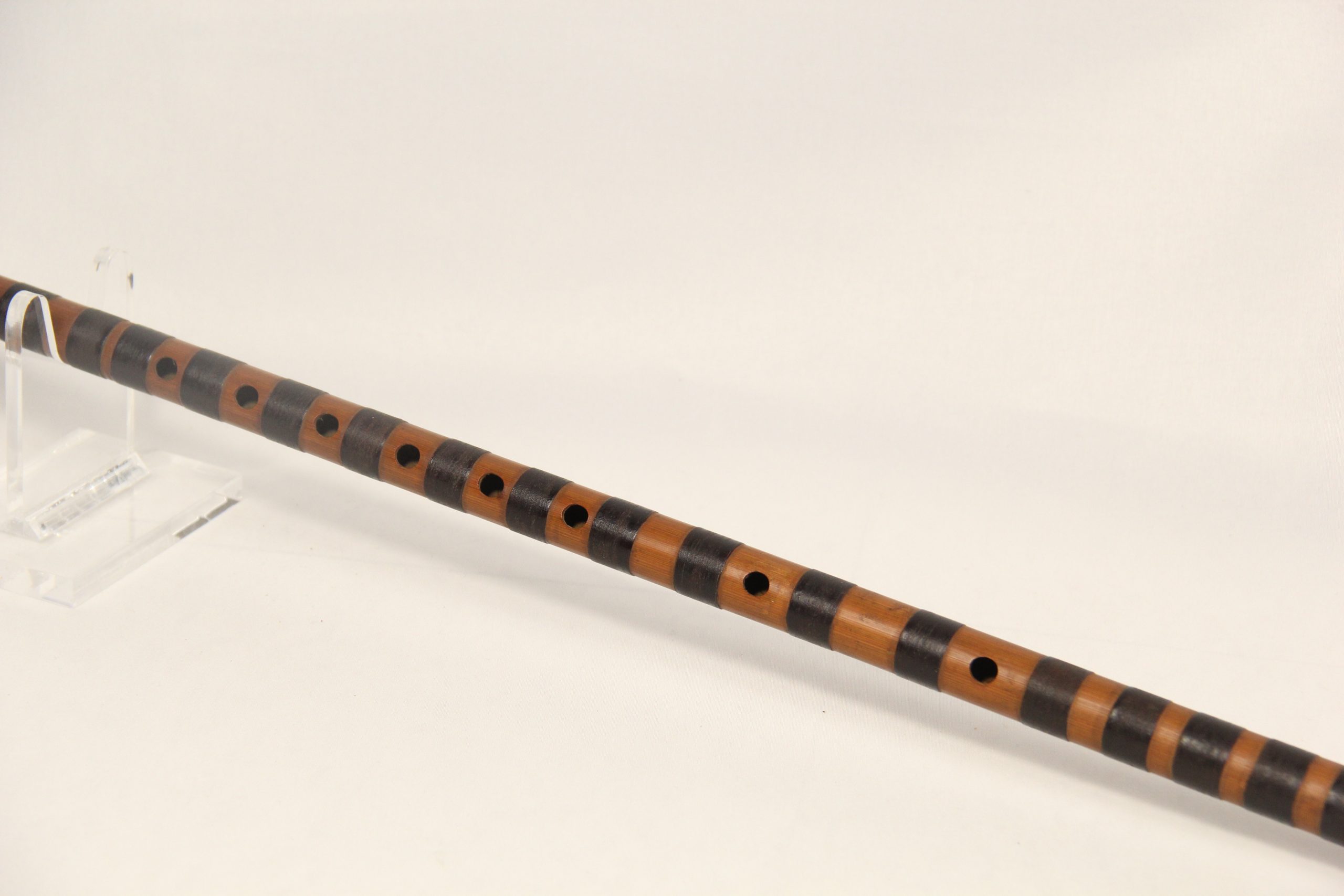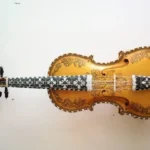
The Dizi, a traditional Chinese flute with roots dating back over 2,000 years, stands as a harmonious link between China’s ancient musical heritage and the contemporary world. Crafted from bamboo and capable of producing a wide range of tones, the Dizi has woven its melodic threads through the tapestry of Chinese culture. From memorial ceremonies for esteemed philosophers to its role in modern film scores, the Dizi’s versatility has allowed it to evolve while preserving its rich traditions. Join us on a journey to explore the historical nuances, cultural symbolism, and global influence of this remarkable instrument as we delve into 25 intriguing facts and numerical trivia about the enchanting Dizi.
Ancient Origins: The Dizi traces its roots back to ancient China, with early versions of the instrument appearing during the Han Dynasty (206 BCE – 220 CE). Its enduring presence in Chinese culture attests to its significance as a traditional musical instrument with a rich history spanning over two millennia. The Dizi has evolved over the centuries, adapting to changing musical tastes while retaining its cultural essence.
Materials and Construction: Traditional Dizis are meticulously crafted from bamboo, showcasing the skilled artistry of Chinese instrument makers. The use of bamboo imparts a unique timbre to the instrument, contributing to its distinct sound. While modern variations may incorporate materials like plastic or wood, the craftsmanship involved in creating a bamboo Dizi remains a celebrated tradition.
Number of Finger Holes: The Dizi’s design includes six finger holes, a characteristic feature that allows for a wide range of notes and musical expression. The arrangement of these holes is standardized, providing a foundation for players to master various playing techniques and musical compositions.
Variety of Keys: Dizis come in different keys, each producing a distinct set of tones. The availability of keys such as C, D, E, F, G, and A allows musicians to select the Dizi that best complements the musical piece or ensemble in which they are performing. This variability contributes to the instrument’s versatility in a wide range of musical genres.
Length Range: The length of the Dizi varies, ranging from 20 to 30 inches (50 to 76 centimeters). This variation directly influences the pitch produced by the instrument. Musicians can select Dizis of different lengths to achieve specific tonal qualities, expanding the expressive capabilities of this ancient flute.
Memorial Significance: The Dizi holds historical and cultural significance, as evidenced by its use in memorial ceremonies for revered figures such as Confucius. The solemn and melodic tones of the Dizi play a role in paying homage to the great philosophers and historical figures of China, further embedding the instrument in the cultural fabric of the nation.
Suo Na: The Suo Na, a type of Dizi, is characterized by its high pitch, making it an essential instrument in traditional Chinese opera. Its unique tonal quality allows it to cut through the complex textures of operatic music, contributing to the dramatic and expressive nature of this traditional art form.
Dizi in Chinese Orchestras: The Dizi occupies a prominent position in Chinese orchestras, providing both melodic and harmonic elements to the ensemble. Its versatility allows it to adapt to various musical genres within the orchestra, demonstrating the instrument’s adaptability and indispensability in traditional Chinese music.
Famous Dizi Performers: Renowned Dizi players, such as Tang Junqiao and Guo Yue, have significantly contributed to the instrument’s popularity on both national and international stages. Their virtuosity and innovative approaches to playing the Dizi have not only elevated the status of the instrument but also inspired a new generation of musicians to explore its expressive possibilities.
Dizi in Traditional Music: The Dizi plays a pivotal role in traditional Chinese music genres such as Jiangnan Sizhu and Minzu Yuetuan. Its incorporation into these musical styles highlights its adaptability and enduring relevance in preserving China’s musical heritage. The Dizi’s ability to evoke the essence of traditional tunes connects contemporary audiences to the rich tapestry of Chinese cultural expression.
Modern Adaptations: In the realm of musical evolution, the Dizi has undergone modern adaptations to meet the demands of contemporary musicians. Electric and bass Dizis have emerged, expanding the instrument’s tonal range and enabling it to resonate in genres beyond traditional Chinese music. These innovations reflect the instrument’s ability to transcend cultural boundaries and find a place in diverse musical landscapes, showcasing its enduring relevance in the ever-evolving world of music.
Cultural Symbolism: The Dizi holds profound cultural symbolism, embodying the harmonious relationship between nature and humanity in traditional Chinese philosophy. Its mellifluous notes are often associated with tranquility and balance, mirroring the deep-rooted connection between Chinese culture and the natural world. The instrument’s symbolic significance extends beyond its musical capabilities, making it a cherished emblem of cultural identity.
Notable Compositions: “High Mountains and Flowing Water” stands as a classic Dizi composition, celebrated for its intricate melodies and expressive qualities. Composed to showcase the full potential of the instrument, this piece has become a staple in the repertoire of Dizi players. Its timeless resonance continues to captivate audiences, offering a glimpse into the emotive power and technical prowess achievable with the Dizi.
Playing Techniques: Dizi players employ a diverse range of techniques to infuse their performances with nuances and emotions. Vibrato, flutter-tonguing, and note bending are among the techniques used to shape the sound and add expressive elements to the music. Mastery of these techniques requires both technical skill and an intimate understanding of the instrument’s capabilities, contributing to the artistry of Dizi performances.
Global Influence: The Dizi has transcended its cultural origins and gained international recognition, contributing to the global diversity of musical instruments. Its incorporation into world music genres reflects the instrument’s adaptability and ability to resonate with audiences across different cultures. This global influence fosters cross-cultural collaborations and enriches the global musical tapestry.
Dizi in Film Scores: The hauntingly beautiful tones of the Dizi have found a place in film scores, particularly in movies with Chinese themes. Its inclusion in cinematic soundtracks adds an authentic and evocative element, enhancing the emotional impact of scenes. The Dizi’s ability to evoke a sense of cultural authenticity has made it a valuable asset in the realm of film composition.
National Conservatory of Music: The establishment of the China National Traditional Orchestra in 1960 marked a pivotal moment in the preservation and promotion of traditional Chinese instruments, including the Dizi. The orchestra has played a crucial role in nurturing talents, commissioning new works, and ensuring the continuity of traditional musical practices. The existence of such institutions underscores the commitment to safeguarding China’s rich musical heritage.
Dizi Festivals: Various Dizi festivals and competitions celebrate the instrument, providing a platform for artists to showcase their skills and innovations. These events not only foster a sense of community among Dizi enthusiasts but also contribute to the continued evolution and appreciation of the instrument. Dizi festivals serve as cultural hubs where performers, educators, and aficionados come together to celebrate their shared passion.
Preservation Efforts: Organizations and musicians actively engage in efforts to preserve traditional Dizi craftsmanship techniques and playing styles. These preservation initiatives recognize the importance of maintaining the authenticity and integrity of the instrument, ensuring that future generations can continue to experience the rich cultural legacy embedded in the Dizi.
Most Expensive Dizi: While specific records for the most expensive Dizi may not be readily available, the craftsmanship, materials, and rarity of certain artisan-crafted Dizis can drive their prices into the thousands of dollars. The value placed on these instruments reflects not only their musical capabilities but also the appreciation for the artistry and dedication involved in their creation.
Dizi in Education: The Dizi plays a pivotal role in music education programs in China, ensuring that the knowledge and techniques associated with this traditional instrument are passed down to future generations. Its inclusion in educational curricula underscores the commitment to preserving cultural heritage and provides aspiring musicians with a gateway to explore the rich tapestry of Chinese music. The Dizi’s presence in schools and conservatories contributes to the cultivation of a new generation of musicians well-versed in traditional Chinese instruments.
Longest Continuous Note: Skilled Dizi players showcase remarkable breath control by producing impressively long continuous notes. This technical feat requires a delicate balance of airflow and embouchure control, showcasing the proficiency of the performer. The ability to sustain long, seamless notes is a testament to the mastery and virtuosity achievable with the Dizi, captivating audiences with its ethereal and sustained tones.
Highest Note: The Dizi is capable of reaching impressive heights in terms of pitch, with experienced players able to achieve remarkably high notes. This expansive range allows the Dizi to convey a wide array of emotions and contribute to the intricate melodies of traditional Chinese music. The instrument’s ability to explore both the high and low registers adds depth and versatility to its expressive capabilities.
Dizi in Jazz Fusion: Some contemporary musicians have embraced the Dizi in jazz fusion, melding traditional Chinese sounds with modern Western genres. This innovative fusion not only showcases the adaptability of the Dizi but also highlights its potential to bridge cultural and musical boundaries. The instrument’s incorporation into diverse genres reflects its evolving role in the ever-expanding world of global music.
Guinness World Records: While specific records may not exist in the Guinness World Records for the Dizi, its historical significance, cultural contributions, and enduring legacy are immeasurable. The absence of specific records does not diminish the impact of the Dizi on the global musical landscape. Its rich history, diverse applications, and continuous evolution position the Dizi as an instrument that transcends quantifiable achievements, earning it a place of honor in the world of traditional Chinese music and beyond.









